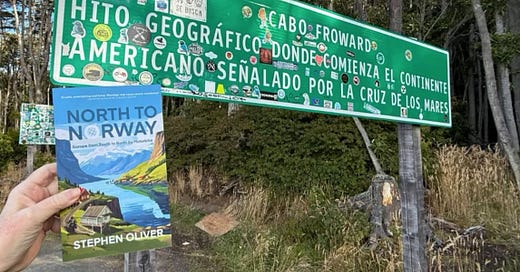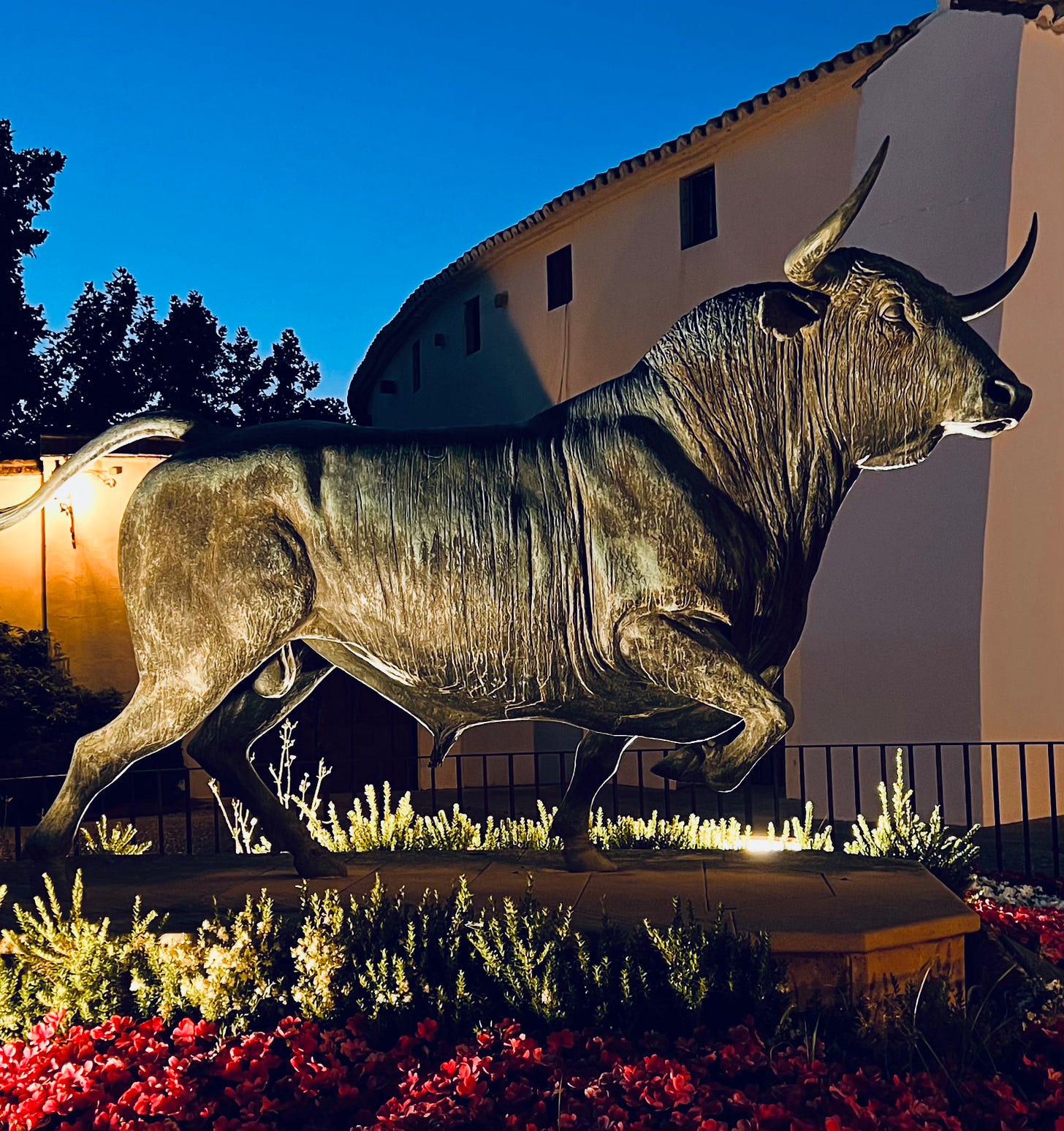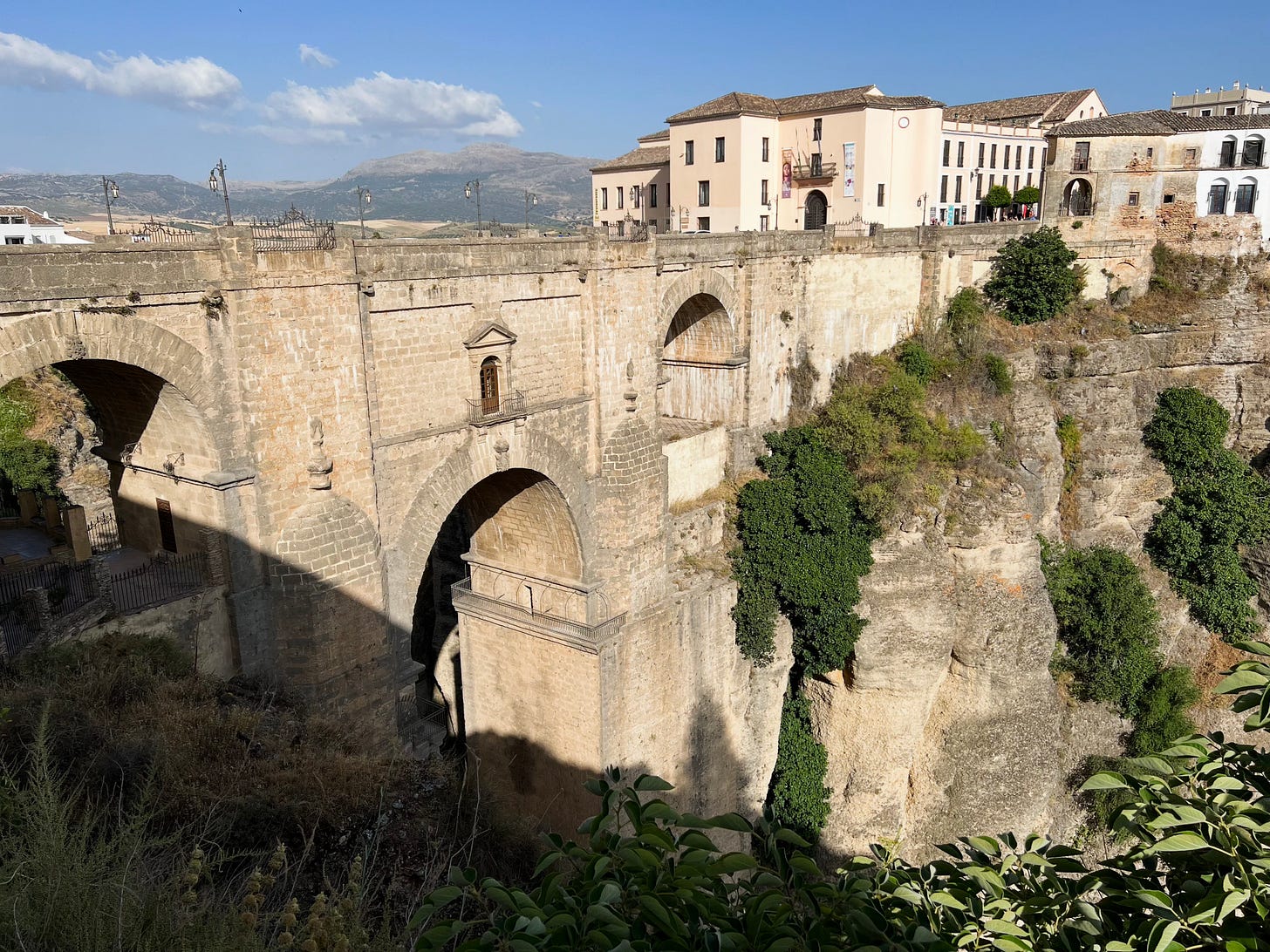My new book ‘North to Norway’ is now out in paperback and e-book. It's a story as much about the joy of travel as about motorcycling. I’m sure I’ve mentioned it before! If you’re still wondering what all the fuss is about I thought a few excerpts over the next few weeks might give you a flavour of my writing and the adventures I recount in the book. I hope that you’ll want to buy the full version, available now on Amazon and in selected branches of Waterstones.
In last week’s extract Stung in Marchena I’d come off my bike on a slippery roundabout, breaking two ribs and damaging my Honda.
After dinner in Ronda last night I had set out to find the bullring which originally inspired Hemingway to write Death in the Afternoon. The town took to the American author, and he became its favourite adopted son, illustrated by the monuments to him that pop up in different places. It was a romantic place, one of the jewels of Andalucía, even if bullfighting was not your thing. The bullring was locked for the evening, so I had to content myself with walking around the outside, admiring a huge statue of a heroic bull that resisted the matador’s estoque (sword) for a record length of time. That bull had some bollocks, and they were—literally—on show, dangling beneath the statue like footballs.
When morning came I had to summon up some balls myself to handle a necessary, if dreaded, task: dealing with my insurance company. I rang the number on my policy. It was a lengthy call. Shortly afterwards, I got a call from a loss adjuster who wanted to see the bike. I told him I was in Spain if he didn’t mind flying out. He laughed, politely declined the offer and we fixed a date for when I was back in Derbyshire to come to assess the damage.
‘I’ll try to crash somewhere more convenient next time,’ I said, immediately regretting it.
‘Ride safely.’
Insurance sorted, I decided to cut myself some slack by having an easy day so booked accommodation not too far away at Nerja. It was almost in the right direction along the Costa del Sol, towards the eventual ferry at Dénia. I headed out of town into the Serranía de Ronda, a junior version of the neighbouring Sierra Nevada. My chest was sorer than yesterday, and I still had a few weeks of discomfort to look forward to. I spoke to a work colleague who’d broken his ribs while skiing.
‘Six weeks it took, six weeks,’ was his happy forecast.
My route took me through Ardales, and the Desfiladero de los Gaitanes, a massive gorge where the narrow Caminito del Rey (King's Path) clings precariously to the walls 300 metres above the water. Much of the lofty walkway consisted of wooden duckboards grafted onto the cliffside, held on with thin strands of wire and some planks hewn into the rockface. I walked a tentative stretch, mandatory safety helmet strapped tightly under my chin. A sweaty day became even sweatier. The path was busy with people navigating their steps like tightrope walkers. Some were evidently petrified, others brazenly peering over the railings in search of the rare wild cats, genets and mongooses that called this royal place home. There were plenty of goats and a few tawny vultures wafting about in the updraughts, but the more exotic residents remained out of sight that day. The gorge far below, the gentle jade waters that threaded through the narrow limestone cleft and the rickety wooden walkways that crossed it filled me with joy. This, though, was not a place for anyone suffering from vertigo, so that was a pleasure I’d be unable to share with my wife; her fear of heights is legendary.
Even though that part of Andalucía was not far from the sand- and sun-worshipping coast, there were few tourists among the lesser-known White Villages. These were places worth hunting for, like mountain truffles. I rode through Álorá, its castle perched on top of a breast-like hill. People stared at me from house doorways, men gawped from outside bars and small children peered out of shop fronts as I pootled through, my visor up in the searing heat. A woman, deeply wrinkled and dark-skinned, her hair tied back roughly in a tight bun and wearing a floral housecoat, swept dust off her front step with a besom broom worn to an angle from years of chores. Stray dogs ran out at my passing, barking fiercely, sometimes from several directions at once. My heart beat faster. One of those canine terrorists under the front wheel would be bad news and I kept a wary eye on the mangy mutts in the mirror until, bored, they gave up the dangerous doggy dodgems.
In my distraction the TomTom led me down a narrow track with a badly broken surface that suddenly dropped ever more steeply down a convex slope. Too narrow a road to turn round on, I was committed now. The slope must have been a descent of one in three or more, even steeper than an infamous road in Wales which I’d ridden once and yet which scared me rigid. This accidental road, with its poor surface, was even worse and there was no way back. Did the hounds chase me there on purpose, like a lamb over a cliff? I picked a careful line through the potholes and rubble, hanging back on the pillion to keep the centre of gravity away from the front wheel. The ABS chattered as the tyres scrabbled for grip. Fortunately it wasn’t a long descent and I squeezed through a gap where a wrecked car had come to grief against a wall.
The road returned to something close to level and I breathed a sigh of relief, like arriving at the foot of a black ski run, intact but cowed. A few minutes later the now decent tarmac passed a large finca, imperious on a man-made hillock of earth, with row after row of palm trees to act as guards to the house. Large birds swooped overhead, each pass taking them lower until they were almost assaulting me with anger. It was a private place up in those defended hills and I sensed it wished to be left in quiet existence away from the secular world of the Costa below.
© 2025 Stephen Oliver
If you’ve enjoyed this excerpt you can find the complete story in paperback and Kindle format on Amazon.






